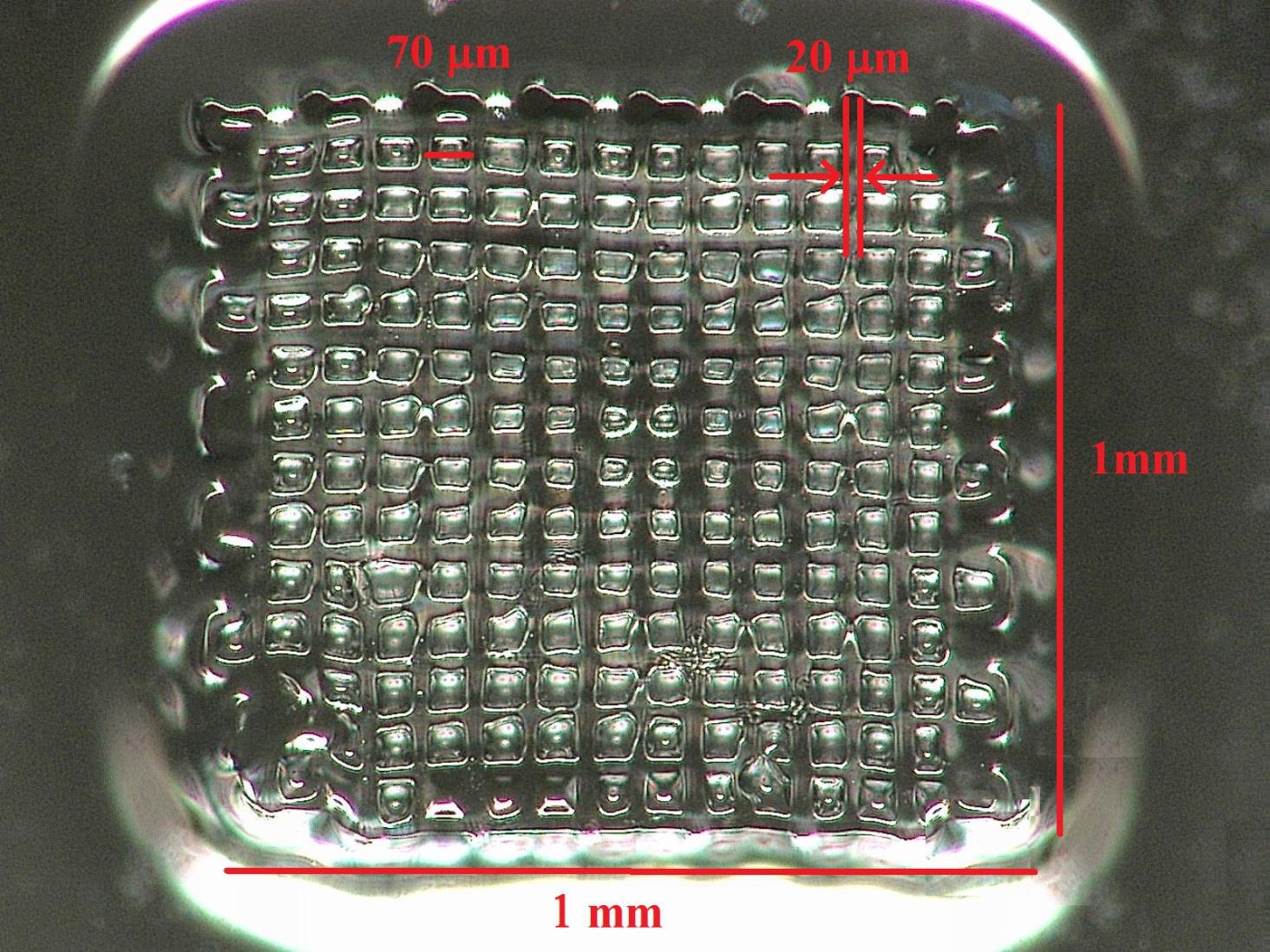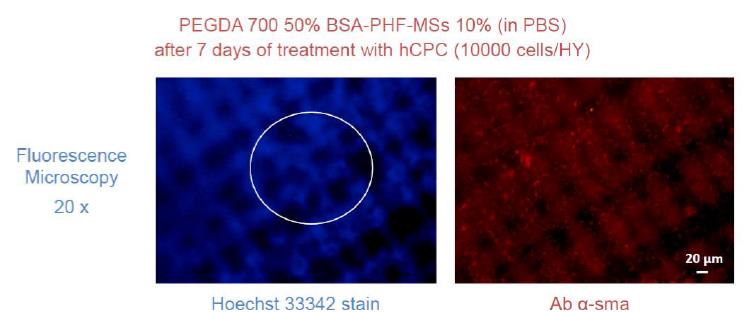Photolithographic 3D-Printing
 3D printing and additive manufacturing are the breaking technology in tissue engineering.
The ability to simulate in vitro the natural environment for a cell culture can lead to faster developing of drugs and drastically decrease its cost.
Another important aspect in this work is to provide a model to study how shape and mechanical properties of the scaffold influence the differentiation
of steam cells. The biocompatible material we are using in this project is the hydrogel, chosen for its ability to absorb large amount of water up to
1000 time its own mass.
We realized scaffold based on high MW-PEGda (PoliEtilenGlicol diacrilate) via one- (2D) and two-photon polymerization using a femtosecond pulsed laser (3D).
Alternatively HDDA (1,6-Hexanediol-diacrylate) via a microstereolithographic approach using a liquid filter as a mean for depth control in the photopolymerization process.
Our goal is to study how the mechanical properties of the scaffold determinate the differentiation of steam cells.
3D printing and additive manufacturing are the breaking technology in tissue engineering.
The ability to simulate in vitro the natural environment for a cell culture can lead to faster developing of drugs and drastically decrease its cost.
Another important aspect in this work is to provide a model to study how shape and mechanical properties of the scaffold influence the differentiation
of steam cells. The biocompatible material we are using in this project is the hydrogel, chosen for its ability to absorb large amount of water up to
1000 time its own mass.
We realized scaffold based on high MW-PEGda (PoliEtilenGlicol diacrilate) via one- (2D) and two-photon polymerization using a femtosecond pulsed laser (3D).
Alternatively HDDA (1,6-Hexanediol-diacrylate) via a microstereolithographic approach using a liquid filter as a mean for depth control in the photopolymerization process.
Our goal is to study how the mechanical properties of the scaffold determinate the differentiation of steam cells.

